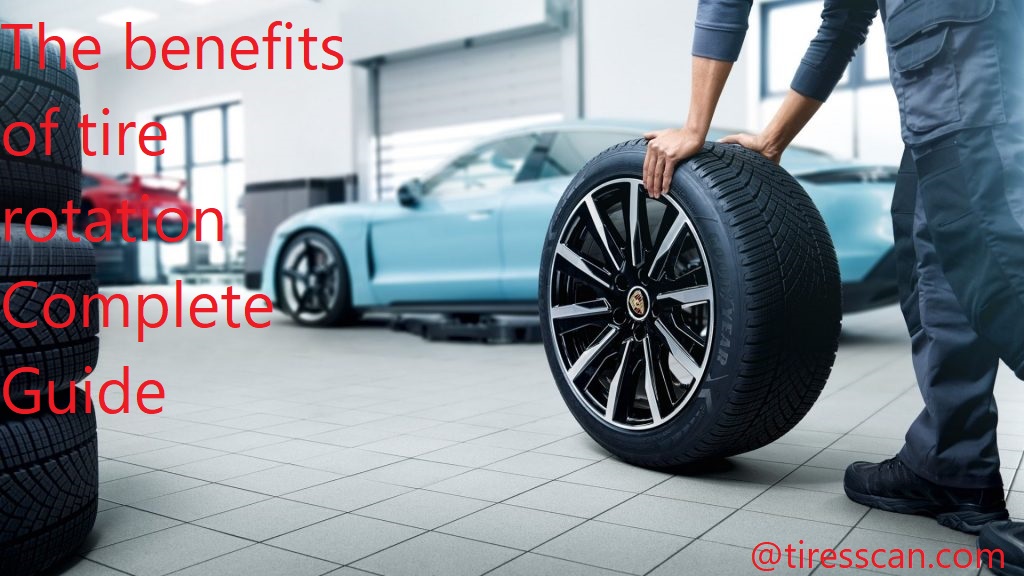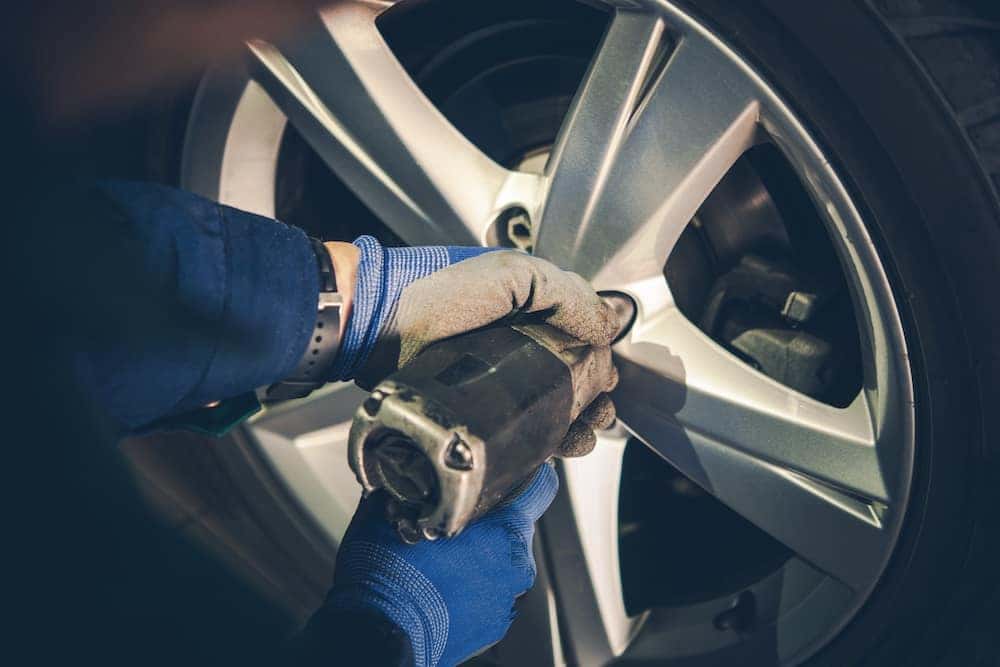If you’re looking for an easy way to extend the life of your car’s tires, tire rotation may be the simple solution you need. You’ll enjoy improved safety and performance, longer-lasting tires, and cost savings in the long run.
Rotating tires is an important part of responsible vehicle maintenance. It helps keep tires evenly balanced, reducing wear and tear on the tread and maximizing tire life. Regular tire rotation helps you get the most out of your tires, saving time and money in the long run.
In this guide, we’ll discuss why it’s important to rotate your tires as well as how to properly rotate them for optimal performance. By learning about the benefits of tire rotation, you can ensure that your car stays in excellent shape over time.
Definition of tire rotation
Tire rotation is a technique undertaken to ensure that the wear of the tires on a vehicle is distributed evenly across all four (or more) tires. Tires typically wear unevenly requiring replacing before their maximum lifespan due to differences in weight distribution and driving habits. Rotating the tires helps extend their lifetime and preserve fuel efficiency as well as improve driving performance for a safer ride overall.
Regular tire rotation also helps to maintain stability when cornering and braking. Tires should be rotated at least every 10,000 km or whenever you notice wear developing in one area of the tire more noticeably than another, whichever comes first. Generally, it is advised that tires be rotated every six months or 8,000 kilometres; make sure to check your specific mileage with your service provider in order to confirm what is appropriate for your vehicle type and its usage condition.

Importance of tire maintenance
The importance of tire maintenance cannot be underestimated. Properly caring for and maintaining your tires could help extend their life, alert you to potential problems, and secure better safety and performance from your vehicle on the road. Tire rotation is one of the key elements of tire maintenance. Tire rotation helps spread out wear over the four tires for longer tread life, even wear-patterns, improved grip on wet roads -allowing for smoother handling & tailoring drive experience according to its purpose– along with fuel efficiency popularity.
At regular intervals (usually every 5-8 thousand kilometers or 6 months), it is recommended that one rotate their tires as part of routine maintenance. This helps ensure best level operation, longevity and safety while reducing the need for emergency replacements. When rotating tires, you should also inspect them carefully at each interval to check for signs of excessive wear or damage that may warrant repair/replacement or other corrective action. Similarly, during tire rotation your wheels should also be inspected for debris that may have lodged in them or become embedded in the tread pattern themselves. It’s important to clear any such debris as it can adversely affect tyre performance in addition to causing unnecessary damage over time.
Tire rotation intervals can vary depending on a variety of factors like make & model -as some vehicles require more frequent rotations due to their design– however generally experts recommend adjusting this based on changes in vehicle weight distribution and/or improvements made since manufacturing date(s). Changes like adding a roof cargo box or increasing payload e.g.: adding a trailer behind car — can significantly alter tyre patterns allowing more even distribution of tread wear from front-to-back(ftb) and side-to-side(stb) at each rotation interval therefore increasing performance & life span relative thereto ie: longer lifespan if unbalanced –sooner if balanced– (ie: ftb pattern will require more frequent rotations than stb).
Benefits of Tire Rotation
Tire rotation is an important part of preventive maintenance for your car. It ensures that your tires wear evenly and last longer, and helps to improve the handling of your car. There are several benefits to tire rotation, including improved tire life, better traction on slippery roads, and even improved fuel economy.
The process of tire rotation involves moving the tires to different positions on the car at regular intervals – usually every 5,000–7,500 miles or so. This helps ensure that all four tires wear evenly over time. By rotating your vehicle’s tires regularly, you can expect to get several more thousand miles out of them before they need replacing.
Another benefit of regular tire rotation is that it improves traction in slick road conditions by ensuring all four tires have even amounts of tread depth and that each tire has uniform contact with the ground. With consistent tread depth in each position on the car, motorist can feel more secure driving in rain or snow because their vehicle can maintain better contact with the roads’ surfaces.
Finally, taking care to keep all four tires evenly balanced will help you maintain fuel efficiency as it reduces strain on your engine from having unevenly worn tires. Having even amounts of tread on all four corners minimizes resistance against the asphalt as you drive thereby increasing fuel efficiency up to 10-20%.
Improved Tire Traction
Tire rotation can improve the overall traction of the tires on your vehicle by redistributing the wear and tear on each tire. When all four tires are used in the same way, such as during braking, acceleration or cornering maneuvers, they will eventually experience uneven wear. This can cause skidding and hydroplaning during wet weather driving due to reduced tread depth on one or more of the tires.
Tire rotation ensures that each tire will have a relatively even surface area with which it can grip the road and provide superior traction in all types of conditions.
Longer Tire Lifespan
One of the primary benefits of tire rotation is that it promotes a longer tire lifespan. At set intervals, having your tires rotated allows the tires to be balanced and appropriately worn. The back tires, which normally bear a heavier load than the front due to engine weight and rear-wheel drive, wear out more quickly than the front tires. Rotating your tires ensures more even wear, so that all four of them will last longer without needing replacement.
Additionally, by regularly rotating your wheels you can detect any potential irregularities or damage far earlier, allowing for faster repair and replacement when needed and helping to avoid serious blowouts or other dangerous scenarios on the road.
Enhanced Fuel Efficiency
While it may not seem obvious at first, having your tires regularly rotated can have a positive impact on fuel efficiency. This is because if you don’t rotate the tires, their treads are likely to become uneven. Having an uneven tread pattern can cause the tire to drag when in contact with the road, and this will lead to decreased fuel efficiency. If your tires are not properly rotated, it could lead to decreased gas mileage of up to 6 percent or more and increased wear on other parts of your vehicle—such as brakes and suspension components—due to having to work harder in order to move forward.
Newer vehicles are increasingly fuel efficient due largely in part to advances in technology such as low-rolling resistance tires; by having them spun and rotated on a regular basis their longevity is extended and they remain more efficient for longer. Ultimately this leads you saving money on maintenance costs down the line and getting more miles out of your current model car or truck.

When to Rotate Tires
When it comes to tire rotation, time is of the essence. Most manufacturers recommend that you rotate your tires at least every 5,000 to 8,000 miles, which is equivalent to roughly every six months. Your car’s owner’s manual will provide a more specific interval based on specific make and model. If you’re unable to find your owner’s manual, most records departments will be able to give you this information.
It’s also important to take into account other factors such as weather conditions or driving habits when you’re deciding how often to rotate your tires. For example, if you live in an area with icy winters and cold climates, it may be necessary for you to rotate your tires more frequently due increased wear on the outside treads from potholes and uneven roads or from winter gritting compounds that can build up over time on the road surface. Similarly, if 90% of your driving is short distance city trips (in which case braking and cornering maneuvers involve much less acceleration than longer distance road trips) then it may be a good idea for you more frequent tire rotations too.
Manufacturer’s Recommendations
Every vehicle manufacturer has slightly different recommendations for when to rotate tires, but some general guidelines are consistent across the industry. Most vehicle makers recommend tire rotation every 3,000 to 6,000 miles or every 3 to 6 months. Manufacturer’s timing recommendations may depend on the type and brand of tires installed and what kind of driving you typically do. Check your owner’s manual for your specific requirements and keep records of when rotations were performed so you can track the intervals.
Rotating your tires manually is a relatively simple process that can be divided into two steps: swapping each tire with other positions on the same axle and swapping tires from one axle to the other — usually from front to back. Generally, front-wheel-drive cars will have more wear in the front and need a more involved tire rotation since all four wheels must be moved. Other considerations include all-wheel drive vehicles and 4×4 trucks that require different approaches based on their drivetrain systems; check with your service advisor if you have questions about how precisely how to rotate your car’s tires.
Signs of Uneven Wear
Uneven wear on tires is a major indicator that they need to be rotated. This can happen as a result of many different factors and understanding the signs can help you know when it’s time to bring your vehicle in for service.
One of the primary signs of uneven tire wear is an increase in vibration throughout the car or truck. Unevenly worn tires can cause an imbalance, leading to shaky steering, increased road noise, and a drop in fuel efficiency. Additionally, significant tread wear may reveal that your vehicle needs an alignment.
The most important sign to look for is tread depth. If some of your tires are showing almost bald patches while others are unaltered, this indicates that tire rotation is needed. Make sure to check around the outer edges of all four tires regularly for any signs of bias or uneven wear. Looking at the tread pattern may also provide insight into possible causes – if you notice more aggressive traction towards one side or particular pattern distortions such as high-low patterning variations, it may be time for tire rotation.
Regular Maintenance Schedule
Regular maintenance is an important part of keeping your vehicle running at its best. To ensure optimal performance and tires that wear evenly, it is important to adhere to a regular tire rotation schedule. This involves inspecting the tires regularly, and rotating their position on the vehicle in order to extend their lifespan and improve your driving experience.
In most cases, it is recommended that tires be rotated every 5,000 miles or once a year, whichever comes first. Some larger vehicles like SUVs may need tires rotated more often due to their weight and size. Consult your vehicle’s manual for exact instructions on how often you should rotate your tires. It’s also a good idea to check the air pressure routinely as this will affect how long the tires last as well as how well they perform while in motion.
When performed properly, tire rotation can help ensure maximum performance from all four wheels with minimal tread wear. It can also reduce road noise and improve fuel efficiency by providing consistent weight distribution across all four corners of the vehicle which will give you better control over uneven terrain or rough roads. Tire rotation is not only beneficial for prolonging the life of your tires but also aid in braking performance when done correctly since it allows for individual wheel alignment for smooth stopping power when necessary.

Conclusion
Ultimately, tire rotation should be an important part of your regular maintenance plan. This quick and simple process offers numerous benefits, from increased performance and reduced risk of punctures to improved fuel economy and enhanced safety. Furthermore, it helps to protect your tires from irregular wear that could lead to their premature failure, so it’s worth taking the time to rotate them yourself or having them professionally rotated at least every 10k miles.
If you’re in the market for new tires or just need a regular tire rotation service for the ones you have now, your local auto shop will be able to help.
FAQs
Does your car feel better after tire rotation?
Yes, tire rotation can improve the overall performance and handling of your car.
Do cars really need tire rotation?
Yes, regular tire rotation is important for maintaining even wear and prolonging the life of your tires.
What is tire rotation advantages and disadvantages?
Advantages of tire rotation include improved tire performance, even wear, and longer tire life. Disadvantages can include increased road noise and the need for more frequent rotations.
Do I need alignment after rotation?
It is not always necessary to have an alignment after tire rotation, but it is recommended to check the alignment to ensure proper tire wear and handling.
Can rotating tires mess up alignment?
Rotating tires should not mess up alignment, but it is important to ensure that the tires are properly balanced and aligned after rotation.
What happens if I don’t do tire rotation?
If you don’t rotate your tires, they can wear unevenly and may need to be replaced sooner. This can also lead to decreased handling and performance.
How do I know if my car needs rotation?
You can check the owner’s manual for recommended rotation intervals or consult with a mechanic. Uneven tire wear or vibrations while driving can also be signs that rotation is needed.
How much does tire rotation cost?
The cost of tire rotation can vary depending on the mechanic and location, but it typically ranges from $20 to $50.
Which is more important tire rotation or alignment?
Both tire rotation and alignment are important for maintaining proper tire wear and handling, but alignment may be more critical for preventing uneven wear.
What are 2 reasons why we rotate tires?
Two reasons to rotate tires are to promote even tire wear and to prolong the life of the tires.
See Also:
- Best Tires For Audi Q5
- Best Tires For Kia Optima
- Best Tires for Kia Sorento
- Best Mud Tires For Street
- Best Performance Tires for Daily Driving

